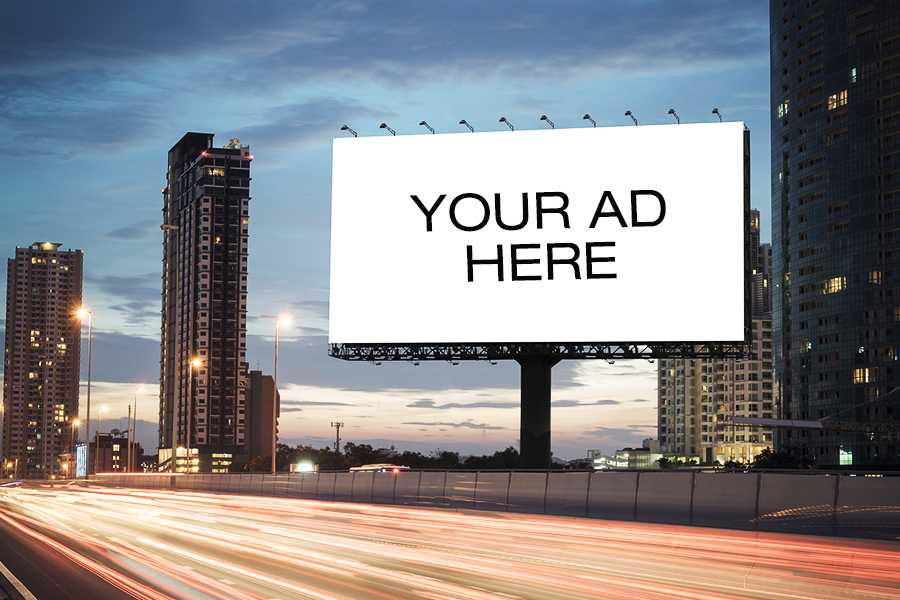Outdoor Advertisement: Achieving Marketing Goals With Outdoor Advertisement

Outdoor advertising refers to any type of advertising that takes place outside of the home or office. This includes advertising on billboards, bus shelters, bus benches, transit advertising, and street furniture such as phone booths. The objective of outdoor advertising is to reach consumers when they are out of the house and on the go.
Outdoor advertising can be a highly effective way to reach a large and diverse audience. Some of the benefits of outdoor advertising include:
Wide Reach: Outdoor advertising has the potential to reach a large number of people, especially in high-traffic areas such as busy roads, shopping centers, and public transportation stations. Billboards and other forms of outdoor advertising can reach a large number of people in a specific geographic area. This makes it an effective way to reach a target audience that may not be reached through other forms of advertising. Additionally, outdoor advertising can be an effective way to reach people who are in transit and may not have time to watch TV or read a newspaper.
Cost-effective: Compared to other forms of advertising, outdoor advertising can be relatively cost-effective, especially if you target high-traffic areas. Outdoor advertising is cost-effective compared to other forms of advertising. For example, a billboard advertisement can cost much less than a 30-second TV commercial. Additionally, outdoor advertisements can be placed in high-traffic areas, which can increase their exposure and reach.
Versatility: Outdoor advertising can take many forms, including billboards, posters, transit advertisements, and more. This versatility makes it possible to find the right format for your advertising goals and budget.
Flexibility: Outdoor advertisements can be easily changed and updated to keep pace with changing advertising campaigns, target audiences, and marketing messages.
Another benefits of outdoor advertising is its ability to deliver a message quickly and simply. Outdoor advertisements typically have limited space, so advertisers need to be concise and make a strong impact with their messaging. This can lead to creative and eye-catching advertisements that can leave a lasting impression on consumers.
High Impact: Outdoor advertising can be eye-catching and attention-grabbing, making it an effective way to make a strong impact on your target audience.
Reach Demographic Targets: Outdoor advertising can be targeted to specific demographic groups based on the location of the advertising.
Brand Awareness: Outdoor advertising can help build brand recognition and raise awareness of your product or service.
24/7 Exposure: Unlike other forms of advertising that may only be seen during specific times of day or in specific places, outdoor advertising is visible 24 hours a day, 7 days a week.
Overall, outdoor advertising can be a valuable tool for reaching a wide audience, building brand recognition, and promoting products and services.
Some common forms of outdoor advertising include:
Billboards: Large, freestanding signs that are designed to be read from a distance. They are typically found along highways and busy streets.
Banners: Large signs made of fabric or vinyl that are hung from poles or buildings. Banners can be used for temporary advertising or as permanent signage.
Street Furniture: Advertisements that are integrated into public benches, bus shelters, or other street furniture.
Transit Advertising: Advertisements displayed on buses, trains, or subways.
Street Level Displays: Advertisements displayed in store windows, on sidewalks, or in public plazas.
Wallscapes: Large-scale advertisements that are painted directly on the sides of buildings.
Sculptures: Advertisements that are incorporated into sculptures or other public art installations.
Sports Stadium Advertising: Advertisements displayed inside or outside sports stadiums during games or events.
Digital Displays: Electronic billboards or other digital displays that show animated or changing advertisements.
Each form of outdoor advertising has its own unique advantages and disadvantages, and the choice of which to use will depend on the goals and target audience of the advertiser
Here are some steps to help you effectively do outdoor advertising:
Define your target audience: Knowing who you want to reach with your outdoor advertising is crucial to ensure that your messages resonate with them.
Choose the right outdoor advertising format: There are various formats to choose from, including billboards, transit ads, street furniture, and more. Consider factors such as your target audience, budget, and location when choosing a format.
Develop a compelling message: Your outdoor advertising message should be concise, attention-grabbing, and easy to understand. Consider using images and graphics to help get your message across.
Select high-traffic locations: Choose locations that will give you maximum exposure and reach your target audience. Consider factors such as traffic patterns, demographics, and competition when selecting a location.
Consider timing and frequency: Consider when and how often your ad will be displayed to maximize its impact. For example, you may want to advertise during high-traffic times of day or on specific days of the week.
Measure and adjust: Evaluate the success of your outdoor advertising efforts and adjust your strategy accordingly. Collect data and use it to make informed decisions about future campaigns.
By following these steps, you can create an effective outdoor advertising campaign that reaches your target audience and helps you achieve your marketing goals
However, there are also some disadvantages to outdoor advertising. For example, outdoor advertisements can be affected by weather conditions, and they may not be visible at night. Additionally, outdoor advertisements can sometimes be seen as intrusive or annoying, especially if they are placed in residential areas.
In conclusion, outdoor advertising can be an effective and cost-efficient way to reach a large audience. It can deliver a message quickly and simply, and it can be placed in high-traffic areas to increase its exposure and reach. However, it is important for advertisers to consider the disadvantages of outdoor advertising and to choose the right location and messaging to make a strong impact on consumers.
Subscribe below to receive business related emails.
subscribe below to receive business/consumer related emails from sumbor.






